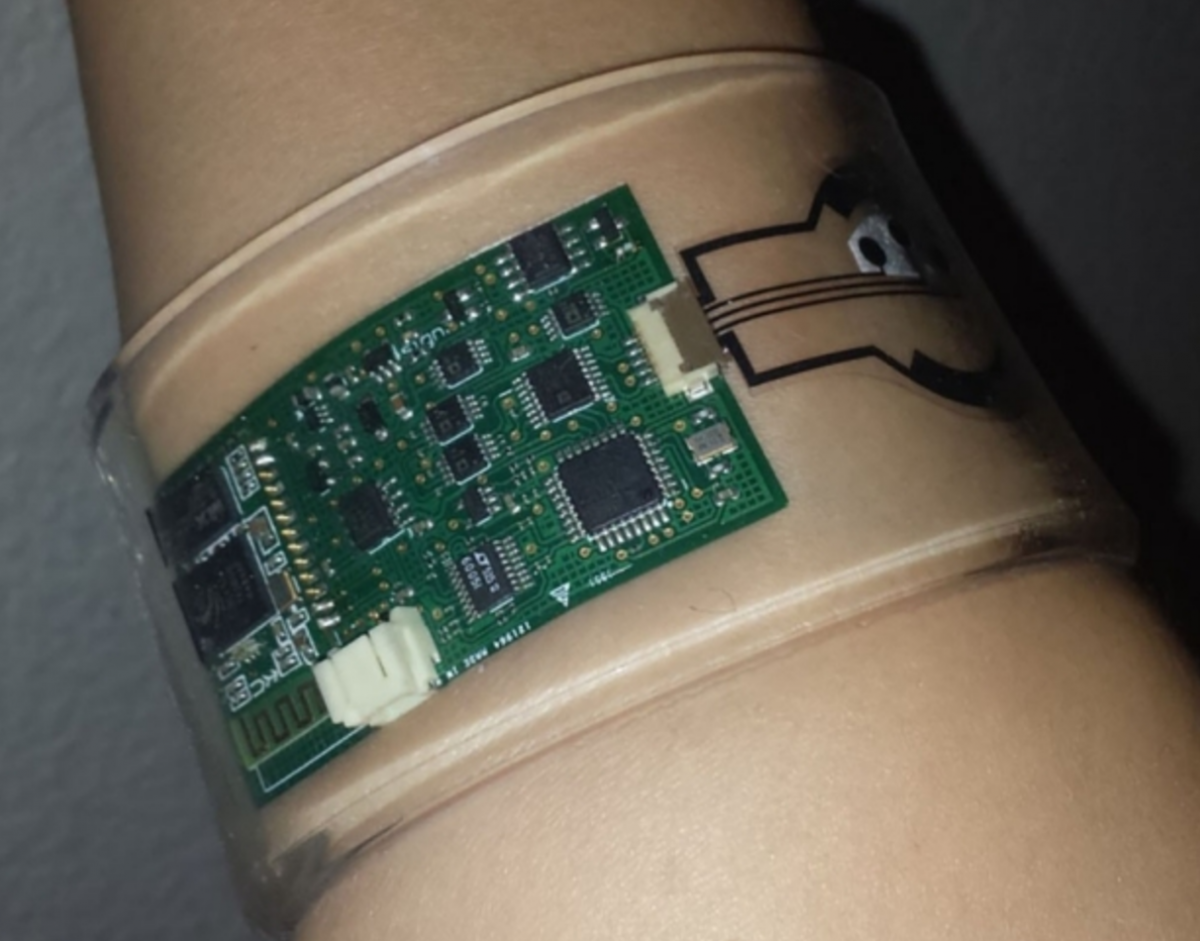 There’s been a lot of talk about sweat-centric technology, with hopeful researchers and digital health entrepreneurs citing the potential for wearables that measure the salty substance to offer up a bevy of biometric insights ranging from athletic performance to glucose monitoring. But the latest scientific undertaking suggests sweat-sensing wearables could go much further: diagnosing disease.
There’s been a lot of talk about sweat-centric technology, with hopeful researchers and digital health entrepreneurs citing the potential for wearables that measure the salty substance to offer up a bevy of biometric insights ranging from athletic performance to glucose monitoring. But the latest scientific undertaking suggests sweat-sensing wearables could go much further: diagnosing disease.
In the form of a wrist-worn band embedded with flexible sensors and microprocessors, researchers at Stanford and the University of California, Berkeley are unlocking the molecular insights from sweat that could diagnose cystic fibrosis, diabetes, and other diseases. The device, which is described in an article published in the journal Proceedings of the National Academy of Sciences, sticks to the skin and stimulates sweat glands, then electronically transmits the results of which molecules are present for analysis and diagnosis. Since different molecules and ions create different electrical signals, the device can identify the presence or absence of compounds indicative of disease. Researchers ran separate studies to detect different molecules –high chloride levels suggest cystic fibrosis; high glucose can indicate diabetes.
“This is a huge step forward,” Dr. Carlos Milla, lead co-author of the paper and associate professor of pediatrics at Stanford, said in a statement.
What he means by that is conventional diagnostic tests for such conditions haven’t changed in 70 years, and a portable, self-contained wearable that uses a smartphone to transmit data to a cloud-based analytics platform could majorly speed up diagnoses as well as treatment time.
Traditionally, such tests are conducted in specialized clinics and require patients to sit still with cumbersome electrodes on their body for 30 minutes. And it’s not over from there, as subsequent laboratory tests must be run to arrive at a full diagnosis. The connected wearable could eliminate that process by remotely extending the reach of skilled clinicians operating out of specialty clinics, bringing diagnostic capabilities to people in rural areas or even developing countries.
“You could really get a reading anywhere in the world,” Milla said.
What’s more, the data gleaned from the wearable could lead to major shifts in drug evaluation and other possible treatments of the conditions. Since cystic fibrosis is caused by any of hundreds of different mutations in the gene, the sensor could help determine precisely which drug works best for which mutations.
“CF drugs work on only a fraction of patients,” Sam Emaminejad, a co-author of the paper and former Stanford postdoctoral scholar, said in a statement. “Just imagine if you use the wearable sweat sensor with people in clinical drug investigations; we could get a much better insight into how their chloride ions go up and down in response to a drug.”
This isn’t the first we’ve heard from this team.Emaminejad and his colleagues published results of their prototype in Nature in January 2016. Moving forward, the researchers are working on large-scale clinical studies examining the correlations between sweat-sensor readings and health.
“In the longer term, we want to integrate it into a smartwatch format for broad population monitoring,” Emaminejad said.
Of course, that will come with some challenges. For starters, people have different sweat “profiles”, and researchers still need to establish a baseline of normal values and variability for each individual. Moreover, there is still much to be learned about all the molecular constituents of sweat that could be monitored and provide useful information about health. But the investigation process is revealing more and more ways to think about how continuous monitoring impacts health decisions and allows for precision medicine, as senior author Dr. Ronald Davis pointed out. For Davis, it’s a way to potentially prevent major illness, both on an individual and population-level.
“For example, if I could sense that I’m coming down with a viral infection and my alarm goes off and says, ‘You’re coming down with a virus infection,’ I should go home and not decide I’ll push through it,” Davis said in a statement. “It’s not about me, it’s about all of my colleagues.”













